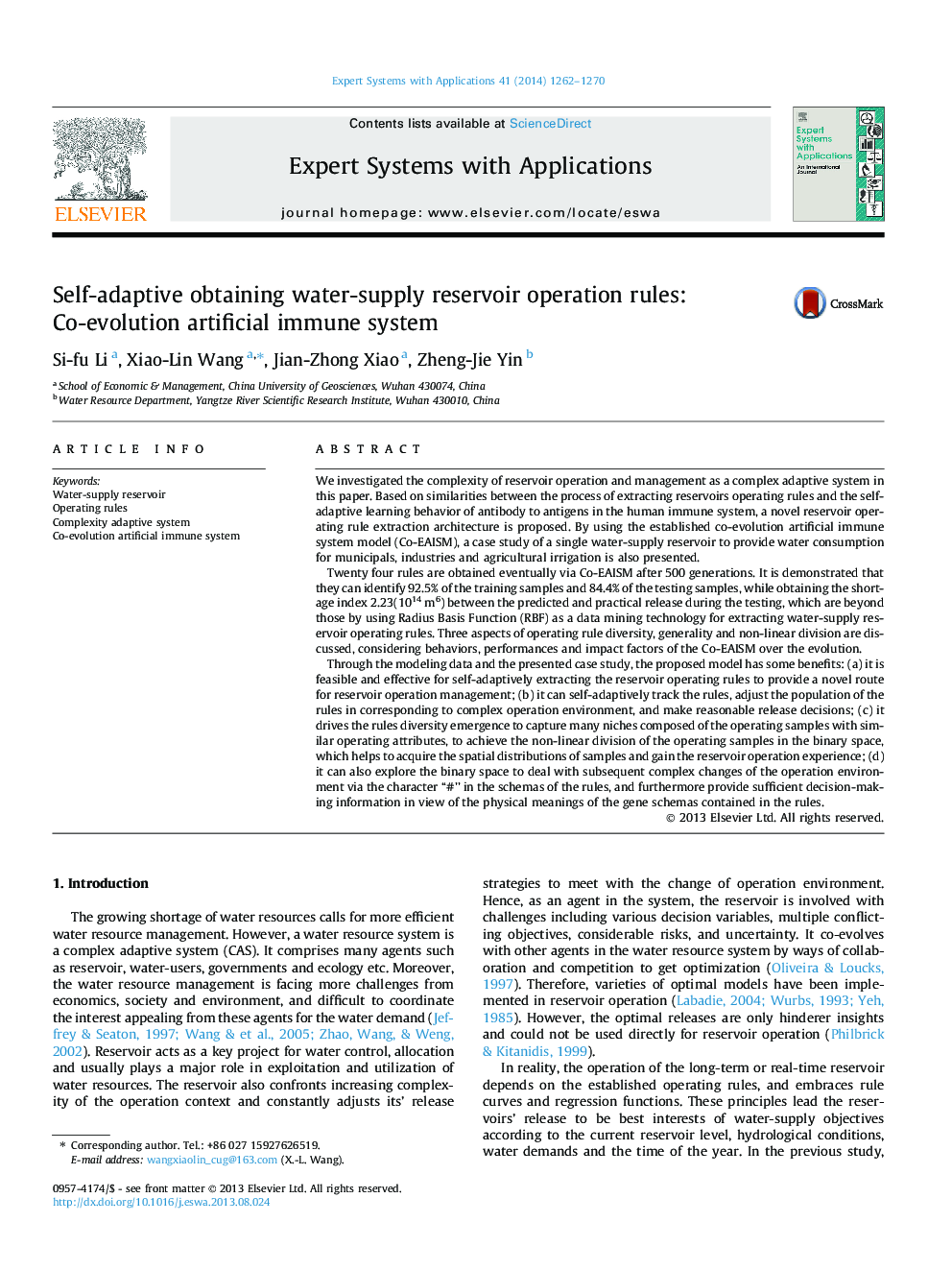| Article ID | Journal | Published Year | Pages | File Type |
|---|---|---|---|---|
| 386798 | Expert Systems with Applications | 2014 | 9 Pages |
•We propose a reservoir operating rule extraction architecture inspired by self-adaptive learning of antibodies to antigens.•We establish a co-evolutionary artificial immune system model to extract the water-supply reservoir operating rules.•The model can self-adaptively track and adjust the population of the rules to be response to complex operation environment.•The obtained rules can gain the experience of reservoir operation and provide more sufficient decision-making information.
We investigated the complexity of reservoir operation and management as a complex adaptive system in this paper. Based on similarities between the process of extracting reservoirs operating rules and the self-adaptive learning behavior of antibody to antigens in the human immune system, a novel reservoir operating rule extraction architecture is proposed. By using the established co-evolution artificial immune system model (Co-EAISM), a case study of a single water-supply reservoir to provide water consumption for municipals, industries and agricultural irrigation is also presented.Twenty four rules are obtained eventually via Co-EAISM after 500 generations. It is demonstrated that they can identify 92.5% of the training samples and 84.4% of the testing samples, while obtaining the shortage index 2.23(1014 m6) between the predicted and practical release during the testing, which are beyond those by using Radius Basis Function (RBF) as a data mining technology for extracting water-supply reservoir operating rules. Three aspects of operating rule diversity, generality and non-linear division are discussed, considering behaviors, performances and impact factors of the Co-EAISM over the evolution.Through the modeling data and the presented case study, the proposed model has some benefits: (a) it is feasible and effective for self-adaptively extracting the reservoir operating rules to provide a novel route for reservoir operation management; (b) it can self-adaptively track the rules, adjust the population of the rules in corresponding to complex operation environment, and make reasonable release decisions; (c) it drives the rules diversity emergence to capture many niches composed of the operating samples with similar operating attributes, to achieve the non-linear division of the operating samples in the binary space, which helps to acquire the spatial distributions of samples and gain the reservoir operation experience; (d) it can also explore the binary space to deal with subsequent complex changes of the operation environment via the character “#” in the schemas of the rules, and furthermore provide sufficient decision-making information in view of the physical meanings of the gene schemas contained in the rules.
